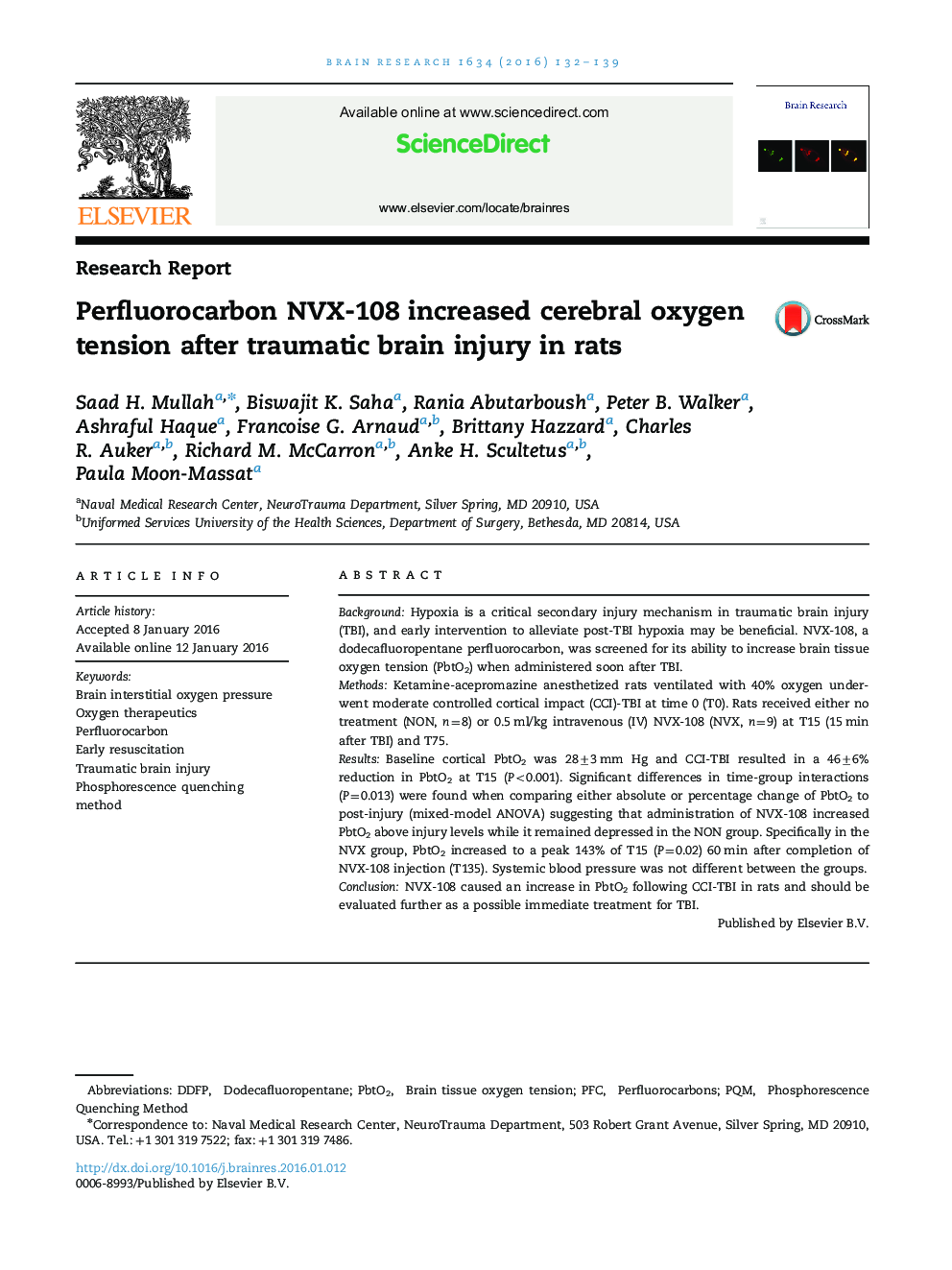| Article ID | Journal | Published Year | Pages | File Type |
|---|---|---|---|---|
| 4323682 | Brain Research | 2016 | 8 Pages |
•Baseline cerebral cortical PbtO2 was 28±3 mm Hg.•CCI-TBI resulted in a 46±6% reduction in PbtO2 at 15 min after injury (T15).•NVX-108 increased PbtO2: peak 143% of T15 at 60 min after complete infusion.
BackgroundHypoxia is a critical secondary injury mechanism in traumatic brain injury (TBI), and early intervention to alleviate post-TBI hypoxia may be beneficial. NVX-108, a dodecafluoropentane perfluorocarbon, was screened for its ability to increase brain tissue oxygen tension (PbtO2) when administered soon after TBI.MethodsKetamine-acepromazine anesthetized rats ventilated with 40% oxygen underwent moderate controlled cortical impact (CCI)-TBI at time 0 (T0). Rats received either no treatment (NON, n=8) or 0.5 ml/kg intravenous (IV) NVX-108 (NVX, n=9) at T15 (15 min after TBI) and T75.ResultsBaseline cortical PbtO2 was 28±3 mm Hg and CCI-TBI resulted in a 46±6% reduction in PbtO2 at T15 (P<0.001). Significant differences in time-group interactions (P=0.013) were found when comparing either absolute or percentage change of PbtO2 to post-injury (mixed-model ANOVA) suggesting that administration of NVX-108 increased PbtO2 above injury levels while it remained depressed in the NON group. Specifically in the NVX group, PbtO2 increased to a peak 143% of T15 (P=0.02) 60 min after completion of NVX-108 injection (T135). Systemic blood pressure was not different between the groups.ConclusionNVX-108 caused an increase in PbtO2 following CCI-TBI in rats and should be evaluated further as a possible immediate treatment for TBI.
